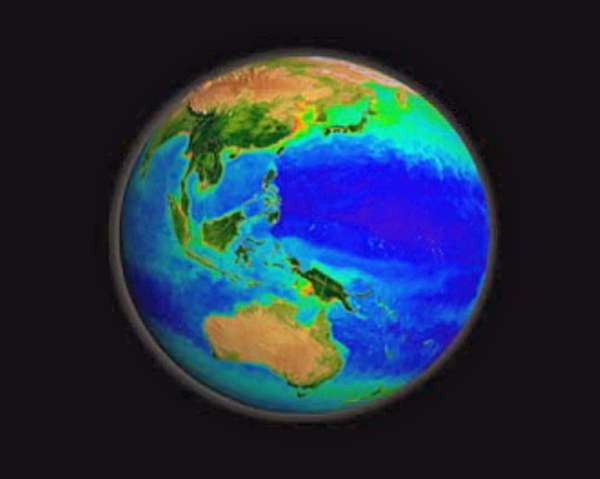Satellite Video Shows Struggling Seas

The ocean's cerulean, aquamarine and emerald hues offer more than artistic inspiration—they reveal how sea biology is struggling with climate change.
NASA's Sea-viewing Wide Field-of-view Sensor (SeaWiFS) has constantly measured ocean color as an indicator of sea life productivity since the satellite reached orbit in 1997. Combined with ocean temperature data, the observations suggest climate change is playing a big role in negatively altering ocean ecosystems.
A new video made from the decade of data illustrates how blooms of phytoplankton, which form the base of the oceanic food chain, are gradually thinning. In the video, purples and blues indicate low concentrations of chlorophyll, which plants and phytoplankton use to gather light energy, whereas yellows, oranges and reds show the highest concentrations.
“Without SeaWiFS, any chance of producing data to assess climate change would not be possible," said Gene Feldman, SeaWiFS project manager at NASA's Goddard Space Flight Center in Greenbelt, Md. "It’s the benchmark of long term, stable observations.”
Despite the simple benchmark of color, those observations have led to countless studies about how the world's changing climate continues to impact oceanic ecosystems.
"SeaWiFS allows us to observe ocean changes and the mechanisms linking ocean physics and biology," Feldman said. "And that's important for our ability to predict the future health of the oceans in a changing climate."
Project managers said the satellite data has also been used to set pollution standards, regulate water quality and design ways to sustain coastal economies reliant on tourism and fisheries.
Sign up for the Live Science daily newsletter now
Get the world’s most fascinating discoveries delivered straight to your inbox.
- SEE THE VIDEO: Earth's Changing Oceans
- Top 10 Surprising Results of Global Warming
- TIMELINE: The Frightening Future of Earth









